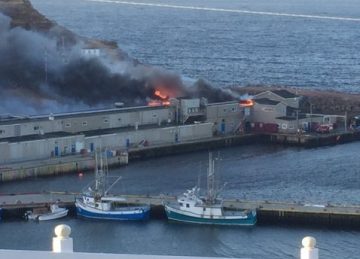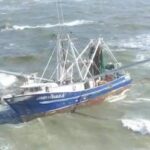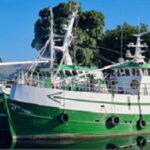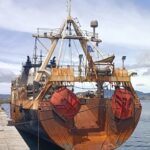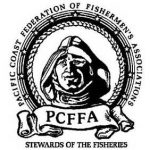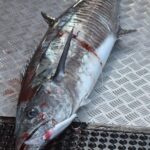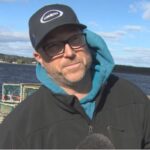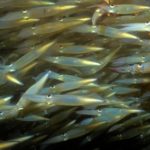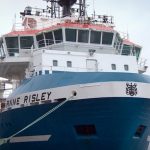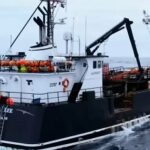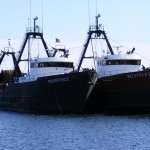Monthly Archives: July 2016
Reactions to Northern Shrimp quota cut- ‘Mixed emotions’ and a ‘devastating effect’
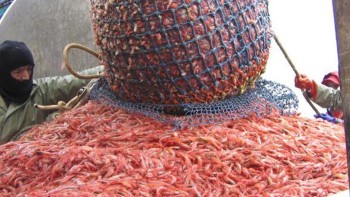 FFAW Union President Keith Sullivan and Fisheries and Aquaculture Minister Steve Crocker spoke out Friday on the federal fisheries department’s decision to cut 42 per cent of the shrimp quota off Area 6. “The immediate effect for inshore enterprises and plants and communities, it’s around 25-million pounds and a rough estimate dollar wise, it’s possibly in the $70-million dollar range,” said Sullivan. “So it’s going to be absolutely devastating for our communities and harvesters, and certainly the communities that depend on that.” While the cut in quota is disappointing, there is some relief being felt that the controversial Last In, First Out (LIFO) policy has lifted. Read the rest here 17:25
FFAW Union President Keith Sullivan and Fisheries and Aquaculture Minister Steve Crocker spoke out Friday on the federal fisheries department’s decision to cut 42 per cent of the shrimp quota off Area 6. “The immediate effect for inshore enterprises and plants and communities, it’s around 25-million pounds and a rough estimate dollar wise, it’s possibly in the $70-million dollar range,” said Sullivan. “So it’s going to be absolutely devastating for our communities and harvesters, and certainly the communities that depend on that.” While the cut in quota is disappointing, there is some relief being felt that the controversial Last In, First Out (LIFO) policy has lifted. Read the rest here 17:25
Nova Scotia scallop fishery to experiment with diver-caught scallops
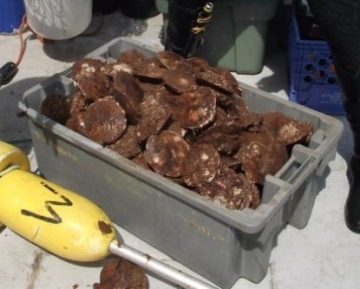 Diver-caught scallops are a premium item on some Nova Scotia restaurant menus, but until now the shellfish served often came from as far away as Mexico. That’s about to change. Beginning Saturday, a team of commercial divers will be permitted to hand-pick scallops from the floor of the Bay of Fundy, between Digby and Digby Neck. The federal Fisheries and Oceans Department recently approved the commercial project. “These are commercial scuba divers who usually fish for urchins. What they’re basically doing is they are going out on a dive boat to … scallop beds, jump in the water with full scuba gear — includes a dry suit because it is mighty cold down there — and they basically just hand-forage them, one at a time and put them into dive bags,” Justin Cantafio, sustainable fisheries campaigner with the Ecology Action Centre, told CBC’s Information Morning in Halifax. Read the story here 16:57
Diver-caught scallops are a premium item on some Nova Scotia restaurant menus, but until now the shellfish served often came from as far away as Mexico. That’s about to change. Beginning Saturday, a team of commercial divers will be permitted to hand-pick scallops from the floor of the Bay of Fundy, between Digby and Digby Neck. The federal Fisheries and Oceans Department recently approved the commercial project. “These are commercial scuba divers who usually fish for urchins. What they’re basically doing is they are going out on a dive boat to … scallop beds, jump in the water with full scuba gear — includes a dry suit because it is mighty cold down there — and they basically just hand-forage them, one at a time and put them into dive bags,” Justin Cantafio, sustainable fisheries campaigner with the Ecology Action Centre, told CBC’s Information Morning in Halifax. Read the story here 16:57
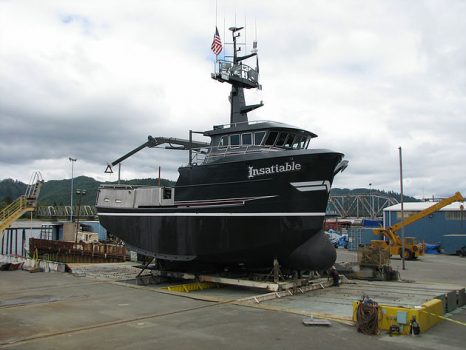
Reedsport celebrates economic milestone thanks to Fred Wahl Marine’s 40th boat launch!
A big celebration is taking place in Reedsport. Fred Wahl Marine marked a big milestone Thursday with the launch of yet another commercial fishing boat, and the success of the business means big dollars for the south coast. Owner Fred Wahl has reached a milestone with the launch of its 40th boat. “Commercial fishing boats over 50 feet … we build more boats here than anywhere else in the United States,” Wahl says. The successful shipyard is reaching the final stages on its expansion project. With its new location on Bolin Island the shipyard will triple in size and provide a shot in the arm for Reedsport’s economy. “50 percent increase in our repair work is probably equal to another $3-4 million a year in revenue, and all that’s going to be spent in Douglas County or southern Oregon anyway,” says project manager Jim Zimmer. Video, Read the rest here 14:29
Cambodian Trafficking Victims Sue US Seafood Importers
 Cambodians who were forced to work in slave-like conditions aboard Thai fishing boats filed a complaint in a U.S. federal court against two American companies and their Thailand-based suppliers. The complainants, two women and five men, were recruited by Bangkok-based Phatthana Seafood Co. Ltd. between 2010 and 2012 and faced “forced labor, involuntary servitude and peonage” at the hands of their employer, said their lawyers, who filed the case in California’s Central District Court last month. U.S. companies cited in the case sell shrimp and other seafood to large North American chain stores, such as Walmart. The case also targets Thai firm S.S. Frozen Food and California-based Rubicon Resources and Wales & Co. Universe Ltd. Agnieszka Fryszman, an attorney with Cohen Millstein law firm, told VOA Khmer that her clients’ employer deducted an excessive amount of money from their paychecks for expenses. Read the rest here 14:00
Cambodians who were forced to work in slave-like conditions aboard Thai fishing boats filed a complaint in a U.S. federal court against two American companies and their Thailand-based suppliers. The complainants, two women and five men, were recruited by Bangkok-based Phatthana Seafood Co. Ltd. between 2010 and 2012 and faced “forced labor, involuntary servitude and peonage” at the hands of their employer, said their lawyers, who filed the case in California’s Central District Court last month. U.S. companies cited in the case sell shrimp and other seafood to large North American chain stores, such as Walmart. The case also targets Thai firm S.S. Frozen Food and California-based Rubicon Resources and Wales & Co. Universe Ltd. Agnieszka Fryszman, an attorney with Cohen Millstein law firm, told VOA Khmer that her clients’ employer deducted an excessive amount of money from their paychecks for expenses. Read the rest here 14:00
Broken Ice Machine Stalls Commercial Fishing on the Lower Yukon
 Fishermen in Marshall and Russian Mission have missed three commercial openings since the machine’s compressor broke last week. They’re missing out on another opening Thursday and two more if the problem isn’t fixed by this weekend. And it most likely won’t be, because this problem is an expensive one: $15,000. “Our way of life out here is in jeopardy due to a simple part for an ice machine,” Nick P. Andrew Jr., Marshall commercial fisherman, said. There’re 48 commercial fishermen in Marshall and Russian Mission. All of them are small skiff operations, and all of them rely on Marshall’s now defunct ice machine. The machine holds 8,000 lbs. of ice. During an opening, fishermen use about half that per day. Marshall’s village corporation, Maserculiq, owns the machine but is refusing to fix it, a situation that’s frustrating villagers. Audio report, read the rest here 13:10
Fishermen in Marshall and Russian Mission have missed three commercial openings since the machine’s compressor broke last week. They’re missing out on another opening Thursday and two more if the problem isn’t fixed by this weekend. And it most likely won’t be, because this problem is an expensive one: $15,000. “Our way of life out here is in jeopardy due to a simple part for an ice machine,” Nick P. Andrew Jr., Marshall commercial fisherman, said. There’re 48 commercial fishermen in Marshall and Russian Mission. All of them are small skiff operations, and all of them rely on Marshall’s now defunct ice machine. The machine holds 8,000 lbs. of ice. During an opening, fishermen use about half that per day. Marshall’s village corporation, Maserculiq, owns the machine but is refusing to fix it, a situation that’s frustrating villagers. Audio report, read the rest here 13:10
Nils Stolpe: MPA’s – ENGOs and Foundations next attempt to halt fishing – Déjà vu all over again
 Back in 2002, when various groups and people had figured out that the creation of things called marine protected areas (MPAs) could be sold politically as a mechanism for “saving the oceans,” the people at the Pew Charitable Trusts and the Conservation Law Foundation hired a marketing firm, Edge Research, to demonstrate that New Englanders and Maritime Canadians would be firmly behind using them to put even more fishermen out of work. Well, borrowing from a line made popular by the late Heather O’Rourke in the movie Poltergeist II, they’re back! Only this time they’re trying to convince the Obama White House that two areas off the New England coast are deserving of protection in perpetuity by being designated as National Monuments. Read the rest here 11:36
Back in 2002, when various groups and people had figured out that the creation of things called marine protected areas (MPAs) could be sold politically as a mechanism for “saving the oceans,” the people at the Pew Charitable Trusts and the Conservation Law Foundation hired a marketing firm, Edge Research, to demonstrate that New Englanders and Maritime Canadians would be firmly behind using them to put even more fishermen out of work. Well, borrowing from a line made popular by the late Heather O’Rourke in the movie Poltergeist II, they’re back! Only this time they’re trying to convince the Obama White House that two areas off the New England coast are deserving of protection in perpetuity by being designated as National Monuments. Read the rest here 11:36
Farr introduces “Screw the Fishermen” bill to protect federal waters off California.
 The timing is impeccable. (Oh yes it is! It’s Pewpeccable!) On the same day the Weekly ran a story about a campaign to protect underwater seamounts, ridges and banks in federal waters off California—a campaign fishermen claim is circumventing proper process—U.S. Rep. Sam Farr, D-Carmel, introduced a bill that would bring those very protections. (Exclusions) According to Diane Pleschner-Steele, director of the California Wetfish Producers Association, the proposal has been shopped around Capitol Hill recently, and California fishermen have been knocked back on their heels since learning of it in May. Farr’s bill would permanently bar commercial fishing and oil and gas development, among other things, in several ecologically important mounts, banks and ridges along the state’s coast. Read the rest here, if you have the stomach for it. 09:22
The timing is impeccable. (Oh yes it is! It’s Pewpeccable!) On the same day the Weekly ran a story about a campaign to protect underwater seamounts, ridges and banks in federal waters off California—a campaign fishermen claim is circumventing proper process—U.S. Rep. Sam Farr, D-Carmel, introduced a bill that would bring those very protections. (Exclusions) According to Diane Pleschner-Steele, director of the California Wetfish Producers Association, the proposal has been shopped around Capitol Hill recently, and California fishermen have been knocked back on their heels since learning of it in May. Farr’s bill would permanently bar commercial fishing and oil and gas development, among other things, in several ecologically important mounts, banks and ridges along the state’s coast. Read the rest here, if you have the stomach for it. 09:22
‘We’ve won the battle, but not the war’: Inshore gets 70% of reduced shrimp quota
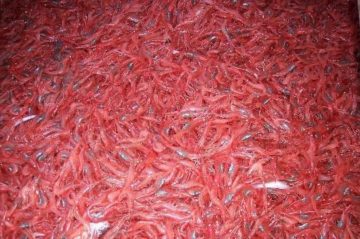 The federal fisheries department is allocating less shrimp off Newfoundland’s northeast coast and southern Labrador, in a decision that is poised to cause trouble for on an industry that is a lifeblood for many fishing communities. According to a document from the Department of Fisheries and Oceans, the total allowable catch for the 2016-2017 season in Area 6 will be 27,825 tons, a 42 per cent reduction from last year’s quota. Area 6 is a fishing zone that covers waters off the coasts of southern Labrador and northern Newfoundland. The last-in, first-out (LIFO) policy is also being abolished and replaced with a proportional sharing arrangement. Inshore vessel operators will be given about 70 per cent of the quota, while offshore trawlers will receive around 23 per cent. Read the rest here Northern shrimp fishery sees quotas cut, offshore to get 23% of catch Click here 08:36
The federal fisheries department is allocating less shrimp off Newfoundland’s northeast coast and southern Labrador, in a decision that is poised to cause trouble for on an industry that is a lifeblood for many fishing communities. According to a document from the Department of Fisheries and Oceans, the total allowable catch for the 2016-2017 season in Area 6 will be 27,825 tons, a 42 per cent reduction from last year’s quota. Area 6 is a fishing zone that covers waters off the coasts of southern Labrador and northern Newfoundland. The last-in, first-out (LIFO) policy is also being abolished and replaced with a proportional sharing arrangement. Inshore vessel operators will be given about 70 per cent of the quota, while offshore trawlers will receive around 23 per cent. Read the rest here Northern shrimp fishery sees quotas cut, offshore to get 23% of catch Click here 08:36
Hawaii fishing, restaurant industries hold rally to protest expansion of fishing ban
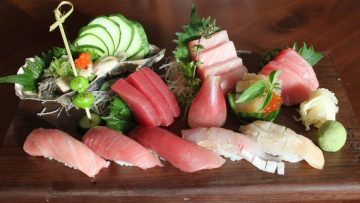 Fishing Means Food, a coalition representing Hawaii’s fishing industry, along with Hawaii chefs, restaurant owners and public figures such as former Gov. George Ariyoshi and Peter Apo, a trustee with the Office of Hawaiian Affairs, is holding a rally on Friday to protest a proposed expansion of the Papahanaumokuakea Marine National Monument and its fishing ban. The rally will be held at 11 a.m. at the Honolulu Fish Auction at Pier 38. The coalition says the expanded fishing ban will push Hawaii’s 140 active commercial fishing boats into international waters where they’ll be forced to compete with less regulated foreign fishing vessels. The expanded ban could reduce the supply of fresh, locally caught fish, impacting such businesses as restaurants, poke shops and wholesalers. Link 08:07
Fishing Means Food, a coalition representing Hawaii’s fishing industry, along with Hawaii chefs, restaurant owners and public figures such as former Gov. George Ariyoshi and Peter Apo, a trustee with the Office of Hawaiian Affairs, is holding a rally on Friday to protest a proposed expansion of the Papahanaumokuakea Marine National Monument and its fishing ban. The rally will be held at 11 a.m. at the Honolulu Fish Auction at Pier 38. The coalition says the expanded fishing ban will push Hawaii’s 140 active commercial fishing boats into international waters where they’ll be forced to compete with less regulated foreign fishing vessels. The expanded ban could reduce the supply of fresh, locally caught fish, impacting such businesses as restaurants, poke shops and wholesalers. Link 08:07
Commercial fisherman slams Noosa sustainability critic
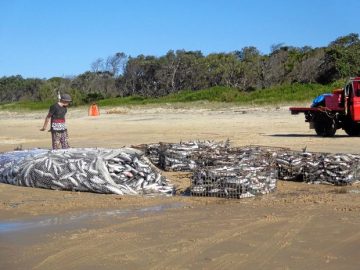 A commercial fisherman whose suppliers were net fishing at Noosa North Shore on the weekend has slammed claims the men were doing “irreparable damage” to local fish stocks. “How is it possible that netters (sic) from NSW can come here to the Noosa Biosphere/Noosa North Shore, camp where they like with no facilities in a no camp zone, take about 300 tonnes of breeding stock fish that should have spawned the lake systems here, truck them back to NSW…” he wrote. He called on the State Government to buy back commercial fishing licences and labelled the practice “unsustainable”. Richard Brown said, “For some reason Noosa is an area that they seem to isolate themselves and think that everyone’s coming and taking their product and leaving.” He said the idea that only Noosa residents should catch fish off Noosa beaches was a recurring one but had no scientific basis. “I wonder if those people in Noosa only eat Noosa tomatoes potato and steak,” he said. Mr Brown said Markwell Fisheries had been operating on the Noosa North Shore since 1944. The fact they are still there was proof their fishing practices were sustainable, he said. Read the rest here 20:57
A commercial fisherman whose suppliers were net fishing at Noosa North Shore on the weekend has slammed claims the men were doing “irreparable damage” to local fish stocks. “How is it possible that netters (sic) from NSW can come here to the Noosa Biosphere/Noosa North Shore, camp where they like with no facilities in a no camp zone, take about 300 tonnes of breeding stock fish that should have spawned the lake systems here, truck them back to NSW…” he wrote. He called on the State Government to buy back commercial fishing licences and labelled the practice “unsustainable”. Richard Brown said, “For some reason Noosa is an area that they seem to isolate themselves and think that everyone’s coming and taking their product and leaving.” He said the idea that only Noosa residents should catch fish off Noosa beaches was a recurring one but had no scientific basis. “I wonder if those people in Noosa only eat Noosa tomatoes potato and steak,” he said. Mr Brown said Markwell Fisheries had been operating on the Noosa North Shore since 1944. The fact they are still there was proof their fishing practices were sustainable, he said. Read the rest here 20:57
H.R. 4576, “Ensuring Access to Pacific Fisheries Act” Passes Committee Unanimously
 The House Natural Resources Committee has approved by voice vote, Congresswoman Aumua Amata Radewagen’s “Ensuring Access to Pacific Fisheries Act,” giving American Samoa a greater say in fishery management in the Western and Central Pacific. Radewagen says her bill, cosponsored with Insular subcommittee chair Don Young of Alaska, will do exactly what its title says. Radewagen’s bill, that had bipartisan committee support, would enable the US to take part in high seas fishery decisions made outside preexisting management agreements, such as the Magnuson-Stevens Act. The bill’s third title ensures access to traditional fishing grounds, but makes other changes, as well… Audio, Read the rest here Aumua’s Fishing Bill Passes Committee Unanimously Click here 18:12
The House Natural Resources Committee has approved by voice vote, Congresswoman Aumua Amata Radewagen’s “Ensuring Access to Pacific Fisheries Act,” giving American Samoa a greater say in fishery management in the Western and Central Pacific. Radewagen says her bill, cosponsored with Insular subcommittee chair Don Young of Alaska, will do exactly what its title says. Radewagen’s bill, that had bipartisan committee support, would enable the US to take part in high seas fishery decisions made outside preexisting management agreements, such as the Magnuson-Stevens Act. The bill’s third title ensures access to traditional fishing grounds, but makes other changes, as well… Audio, Read the rest here Aumua’s Fishing Bill Passes Committee Unanimously Click here 18:12
U.S. House Makes Strong Statement Against Marine Monument
 The U.S. House of Representatives made a strong statement against the declaration of marine monuments last night, passing an amendment offered by Congressman Lee Zeldin (R-New York) to bar funding for the designation of any National Marine Monuments by the President. The amendment to H.R. 5538, the Fiscal Year 2017 Interior and Environment Appropriations bill, passed the House by a vote of 225-202. Congressman Zeldin represents a coastal district and the fishing hub of eastern Long Island, N.Y. Yesterday, National Coalition for Fishing Communities (NCFC) members the Garden State Seafood Association (NJ), the Red Crab Harvesters Association (MA), the Long Island Commercial Fishing Association, and Blue Water Fisheries Inc. (NY) asked fellow NCFC members to reach out to their representatives to support the amendment. The Montauk Tilefish Association (NY) and the Monkfish Defense Fund joined them in calling for support for the amendment. Mr. Zeldin explained that he offered the amendment to keep commercial fishermen from losing access to important fishing areas through Marine Monument Designations. Opposition to the amendment was led by Congresswoman Niki Tsongas (D-Massachusetts) and Congresswoman Chellie Pingree (D-New Hampshire). Read the rest here 17:07
The U.S. House of Representatives made a strong statement against the declaration of marine monuments last night, passing an amendment offered by Congressman Lee Zeldin (R-New York) to bar funding for the designation of any National Marine Monuments by the President. The amendment to H.R. 5538, the Fiscal Year 2017 Interior and Environment Appropriations bill, passed the House by a vote of 225-202. Congressman Zeldin represents a coastal district and the fishing hub of eastern Long Island, N.Y. Yesterday, National Coalition for Fishing Communities (NCFC) members the Garden State Seafood Association (NJ), the Red Crab Harvesters Association (MA), the Long Island Commercial Fishing Association, and Blue Water Fisheries Inc. (NY) asked fellow NCFC members to reach out to their representatives to support the amendment. The Montauk Tilefish Association (NY) and the Monkfish Defense Fund joined them in calling for support for the amendment. Mr. Zeldin explained that he offered the amendment to keep commercial fishermen from losing access to important fishing areas through Marine Monument Designations. Opposition to the amendment was led by Congresswoman Niki Tsongas (D-Massachusetts) and Congresswoman Chellie Pingree (D-New Hampshire). Read the rest here 17:07
Bristol Bay reds late again; late run Kenai kings start strong
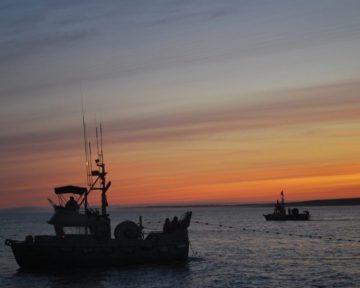 It’s the second late run in a row for the state’s most valuable salmon fishery, and the late run of king salmon in the state’s most popular river are showing up early in strong numbers. Bristol Bay, the world’s largest wild sockeye salmon producing region, experienced a massive late run of sockeye salmon last year, contributing with other market forces to drop the ex-vessel price of salmon to 50 cents per pound, or about half the historic average. This year, most signs point to a similarly late run. Late doesn’t necessarily mean below forecast. Last year, the historical midpoint of July 4 came and went with only 8.87 million fish harvested, about 35 percent less than the five-year average. All signs pointed to a Bristol Bay harvest of less than 20 million fish. By the end of the season, a late burst of sockeye produced one of the largest runs on record. Read the rest here 16:19
It’s the second late run in a row for the state’s most valuable salmon fishery, and the late run of king salmon in the state’s most popular river are showing up early in strong numbers. Bristol Bay, the world’s largest wild sockeye salmon producing region, experienced a massive late run of sockeye salmon last year, contributing with other market forces to drop the ex-vessel price of salmon to 50 cents per pound, or about half the historic average. This year, most signs point to a similarly late run. Late doesn’t necessarily mean below forecast. Last year, the historical midpoint of July 4 came and went with only 8.87 million fish harvested, about 35 percent less than the five-year average. All signs pointed to a Bristol Bay harvest of less than 20 million fish. By the end of the season, a late burst of sockeye produced one of the largest runs on record. Read the rest here 16:19
Do Lobsters Live Forever?
 Many animals that live in the deep, dark sea are subject to myths, and lobsters are no different. But one particular “belief” that lobsters would be immortal were it not for fishermen and hungry predators doesn’t exactly hold water, biologists told Live Science. “Lobsters age just like most other organisms,” said Thomas Matthews, a lobster biologist with the Florida Fish and Wildlife Conservation Commission. Some lobsters, however, do have extraordinarily long life spans. The American Lobster (Homarus americanus) can live to at least 100 years, which is more than five times the life span of the Caribbean spiny lobster (Panulirus argus) can live to at least 100 years, which is more than five times the life span of the Caribbean spiny lobster. Water temperature explains most of this difference in age, Matthews said. When lobsters are in warm water, such as the Caribbean, they have faster metabolisms. Conversely, when they’re in cold water, their metabolisms are slower. Read the rest here 14:42
Many animals that live in the deep, dark sea are subject to myths, and lobsters are no different. But one particular “belief” that lobsters would be immortal were it not for fishermen and hungry predators doesn’t exactly hold water, biologists told Live Science. “Lobsters age just like most other organisms,” said Thomas Matthews, a lobster biologist with the Florida Fish and Wildlife Conservation Commission. Some lobsters, however, do have extraordinarily long life spans. The American Lobster (Homarus americanus) can live to at least 100 years, which is more than five times the life span of the Caribbean spiny lobster (Panulirus argus) can live to at least 100 years, which is more than five times the life span of the Caribbean spiny lobster. Water temperature explains most of this difference in age, Matthews said. When lobsters are in warm water, such as the Caribbean, they have faster metabolisms. Conversely, when they’re in cold water, their metabolisms are slower. Read the rest here 14:42
Deal For New Fish Buyer With Kuskokwim Villages Could Fall Through
 The village of Quinhagak is hoping to sell fish to Seattle based company North West Sea Food Exchange after Costal Villages Region Fund stopped buying fish earlier this year. But the village is running into some unexpected problems that could prevent the partnership. When CVRF said they were no longer going to support their commercial fishing program, they meant it. “We need cranes to offload the boats,” Warren Jones said. Jones is the manager of the native corporation in Quinhagak. He says the village cannot process fish or even transport it without CVRF equipment right now. “We need forklifts to get the totes on the truck. We need the ice machine to keep the fish chilled,” Jones said. CVRF told Quinhagak in an email they would not be allowed to use equipment they had once used for the fisheries operation left in the village. Jones says he didn’t expect this, and now he’s worried the deal is dead. Read the rest here 13:44
The village of Quinhagak is hoping to sell fish to Seattle based company North West Sea Food Exchange after Costal Villages Region Fund stopped buying fish earlier this year. But the village is running into some unexpected problems that could prevent the partnership. When CVRF said they were no longer going to support their commercial fishing program, they meant it. “We need cranes to offload the boats,” Warren Jones said. Jones is the manager of the native corporation in Quinhagak. He says the village cannot process fish or even transport it without CVRF equipment right now. “We need forklifts to get the totes on the truck. We need the ice machine to keep the fish chilled,” Jones said. CVRF told Quinhagak in an email they would not be allowed to use equipment they had once used for the fisheries operation left in the village. Jones says he didn’t expect this, and now he’s worried the deal is dead. Read the rest here 13:44
Louisiana Wildlife and Fisheries Agents seize catch from illegal shrimper
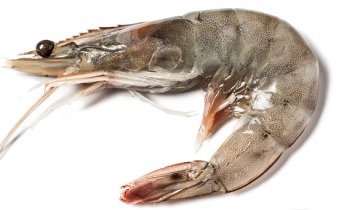 The inshore shrimp season closed across most of the Louisiana coast on July 3, but the Louisiana Department of Wildlife and Fisheries says that was just a formality to one Buras man. Department enforcement agents say they caught ., 32, using skimmers to catch shrimp Tuesday. The agents seized and sold 1,413 pounds of shrimp, the department said. Agents were in the area in response to complaints they had received of illegal shrimping taking place near Buras, the department reported in a news release Wednesday. Read the rest here 13:18
The inshore shrimp season closed across most of the Louisiana coast on July 3, but the Louisiana Department of Wildlife and Fisheries says that was just a formality to one Buras man. Department enforcement agents say they caught ., 32, using skimmers to catch shrimp Tuesday. The agents seized and sold 1,413 pounds of shrimp, the department said. Agents were in the area in response to complaints they had received of illegal shrimping taking place near Buras, the department reported in a news release Wednesday. Read the rest here 13:18
French fishermen bag a Portuguese submarine!
 French fishermen bagged the biggest catch of their lives when they reeled in a Portuguese submarine. The 220ft navy vessel got tangled in the net of a trawler off the English coast as it was taking part in a training mission. Portugal’s Armed Forces General Staff said the sub got too close to the boat when it was below the surface about 34 miles (55km) southeast of Lizard Point in Cornwall. The trawler, Daytona, which is registered to port in northwest France called Saint-Brieuc, was fishing in the area. Blissfully unaware there was an assault sub below them, fully equipped with eight torpedoes and four harpoons, the fishermen plodded along with their work. The Tridente-class submarine, which weighs more than 2,000 tonnes, got stuck in the net and hit the fishing boat as it tried to surface. Read the rest here 11:04
French fishermen bagged the biggest catch of their lives when they reeled in a Portuguese submarine. The 220ft navy vessel got tangled in the net of a trawler off the English coast as it was taking part in a training mission. Portugal’s Armed Forces General Staff said the sub got too close to the boat when it was below the surface about 34 miles (55km) southeast of Lizard Point in Cornwall. The trawler, Daytona, which is registered to port in northwest France called Saint-Brieuc, was fishing in the area. Blissfully unaware there was an assault sub below them, fully equipped with eight torpedoes and four harpoons, the fishermen plodded along with their work. The Tridente-class submarine, which weighs more than 2,000 tonnes, got stuck in the net and hit the fishing boat as it tried to surface. Read the rest here 11:04
Hawaii’s longline fleet about to hit its 3,554-ton bigeye tuna limit, enviro scorned rule will keep them fishing
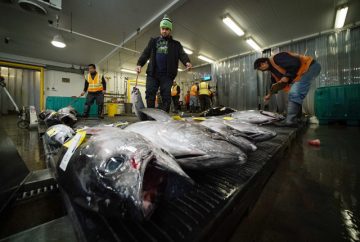 Hawaii’s longline fleet is about to hit its 3,554-ton limit for bigeye tuna in the Western and Central Pacific, prompting a closure date for the fishery of July 22, according to the National Oceanic and Atmospheric Administration. The longliners had caught an estimated 98 percent of their annual quota by Wednesday, National Marine Fisheries Service reported. The feds had been predicting longliners would hit their bigeye tuna limit by Aug. 14. But the closure will likely be short-lived thanks to a federal rule that proposes, like in years past, allowing U.S. Pacific Island territories — American Samoa, Guam and the Commonwealth of the Northern Mariana Islands — to each allocate up to 1,000 tons of their 2,000-ton quotas to U.S. longliners under a “specified fishing agreement.” David Henkin, staff attorney for Earthjustice, a nonprofit environmental law organization, calls it a “shell game” that allows overfishing, but the courts have so far disagreed. Read the rest here 10:23
Hawaii’s longline fleet is about to hit its 3,554-ton limit for bigeye tuna in the Western and Central Pacific, prompting a closure date for the fishery of July 22, according to the National Oceanic and Atmospheric Administration. The longliners had caught an estimated 98 percent of their annual quota by Wednesday, National Marine Fisheries Service reported. The feds had been predicting longliners would hit their bigeye tuna limit by Aug. 14. But the closure will likely be short-lived thanks to a federal rule that proposes, like in years past, allowing U.S. Pacific Island territories — American Samoa, Guam and the Commonwealth of the Northern Mariana Islands — to each allocate up to 1,000 tons of their 2,000-ton quotas to U.S. longliners under a “specified fishing agreement.” David Henkin, staff attorney for Earthjustice, a nonprofit environmental law organization, calls it a “shell game” that allows overfishing, but the courts have so far disagreed. Read the rest here 10:23
New Zealand Fisherman faces prosecution for deaths of albatrosses during observed fishing trip
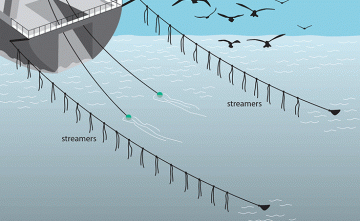 A commercial fisherman is to be prosecuted and faces a fine of up to $100,000 after dozens of albatross were killed during a fishing trip. The unnamed fisherman is being prosecuted by the Ministry For Primary Industries, which is now set to introduce additional measures to help prevent more seabird deaths as a result of the incident. A statement released by MPI today said the birds were killed when the commercial fisherman failed to use a tori line – a compulsory device used to scare birds away from baited hooks – while fishing for southern bluefin tuna off the West Coast of New Zealand. “The skipper faces a maximum fine of $100,000 in relation to an offence under the Fisheries (Commercial Fishing) Regulations and forfeiture of the vessel used in the operation.” The incident was reported by an MPI observer who was on board the vessel at the time. Read the rest here 09:47
A commercial fisherman is to be prosecuted and faces a fine of up to $100,000 after dozens of albatross were killed during a fishing trip. The unnamed fisherman is being prosecuted by the Ministry For Primary Industries, which is now set to introduce additional measures to help prevent more seabird deaths as a result of the incident. A statement released by MPI today said the birds were killed when the commercial fisherman failed to use a tori line – a compulsory device used to scare birds away from baited hooks – while fishing for southern bluefin tuna off the West Coast of New Zealand. “The skipper faces a maximum fine of $100,000 in relation to an offence under the Fisheries (Commercial Fishing) Regulations and forfeiture of the vessel used in the operation.” The incident was reported by an MPI observer who was on board the vessel at the time. Read the rest here 09:47
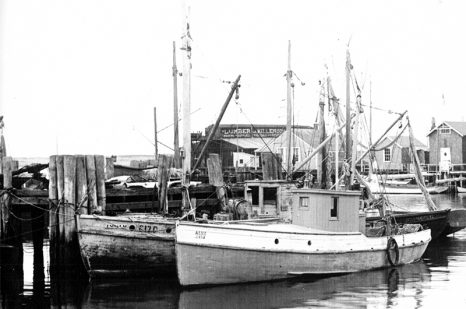
Nantucket History: Collapse of the Quahog Industry by Amy Jenness
In 1913 an Edgartown fisherman named Sam Jackson was dragging for flounder around Tuckernuck Shoal when he discovered a massive bed of quahogs and forever changed the island’s shellfish industry. For centuries local fishermen had harvested large clams, also known as quahogs, as well as oysters and scallops. Prior to Jackson’s discovery, quahog fishermen rowed their dories into Nantucket and Madaket harbors and gathered the shellfish in shallow water using large tongs. A typical catch was three to four bushels a day. For 1912, industry analysts guessed that the Nantucket quahog industry brought in about $100,000. In June of that year the Inquirer & Mirror noted, “Fifty-eight boats were at work on the quahog beds in the harbor Wednesday morning. And with this little gold mine right in the harbor, within a mile or so from town, the Nantucket fishermen have been foolish enough to permit thousands of bushels of seed quahogs to be shipped to other places to grow and become a source of revenue!” That year fishermen were upset that thousands of quahog seed had been shipped to other tows to fortify clam beds there. Read the story here 09:26
East Coast fishermen spar with federal government over cost of at-sea monitors
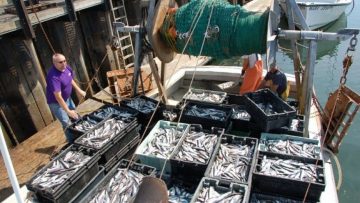 Every year, the federal government spends millions monitoring New England commercial fishermen to ensure they ply their timeless maritime trade in accordance with the law. Now, a judge is set to rule on who should foot the bill for the on-board monitors: the government or the fishing boat owners. The East Coast fishermen say sticking them with the bill would be the “death knell” for their industry and is illegal on the part of the federal government. Fishermen of important New England food species such as cod and haddock will have to start paying the cost of at-sea monitors soon under new rules. Monitors — third-party workers hired to observe fishermen’s compliance with federal regulations — collect data to help determine future fishing quotas and can cost about $18,000 a year, or $710 per voyage. “It is unlawful for NOAA to force struggling fishermen to pay for their own at-sea monitors,” said former federal judge Alfred Lechner, the institute’s president and CEO. “The significant costs of these regulations should be the responsibility of the government.” Read the rest here 08:57
Every year, the federal government spends millions monitoring New England commercial fishermen to ensure they ply their timeless maritime trade in accordance with the law. Now, a judge is set to rule on who should foot the bill for the on-board monitors: the government or the fishing boat owners. The East Coast fishermen say sticking them with the bill would be the “death knell” for their industry and is illegal on the part of the federal government. Fishermen of important New England food species such as cod and haddock will have to start paying the cost of at-sea monitors soon under new rules. Monitors — third-party workers hired to observe fishermen’s compliance with federal regulations — collect data to help determine future fishing quotas and can cost about $18,000 a year, or $710 per voyage. “It is unlawful for NOAA to force struggling fishermen to pay for their own at-sea monitors,” said former federal judge Alfred Lechner, the institute’s president and CEO. “The significant costs of these regulations should be the responsibility of the government.” Read the rest here 08:57
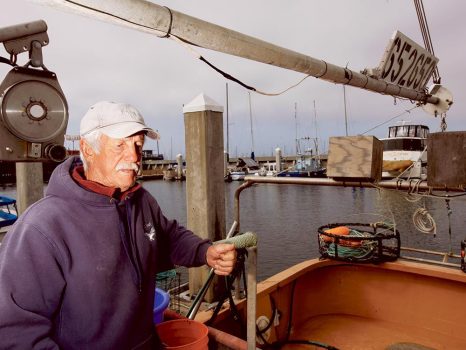
California fishermen, enviros fight over proposal to protect underwater seamounts.
California fishermen first learned of the proposal in May, out of the blue. In a six-page, unattributed document, the proposal suggested turning several of the state’s offshore seamounts, ridges and banks into national monuments, permanently closing them to fishing as well as oil and gas development. Under the federal Antiquities Act of 1906, presidents have the power to designate monuments, and implicitly, the proposal asked President Barack Obama to exercise that executive power. “It’s fishing management by fiat,” says Diane Pleschner-Steele, director of the California Wetfish Producers Association. Among the partners behind the proposals is Marine Conservation Institute, and MCI President Lance Morgan, a marine biologist, disagrees that he’s trying to avoid due process, and says that’s just how these things get done. Read the rest here 08:08
MPAs: Closing parts of the ocean to fishing not enough to protect marine ecosystems
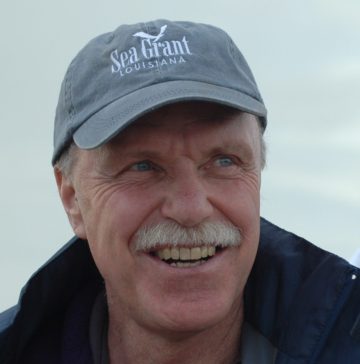 A University of Washington fisheries professor argues this week that saving biodiversity in the world’s oceans requires more than banning fishing with marine protected areas, or oceanic wilderness areas. In a three-page editorial published this week in the journal Nature, he argues that this increasingly popular conservation strategy is not as effective as properly managing recreational and commercial fisheries. “There’s this idea that the only way you can protect the ocean is by permanently closing parts of the ocean to fishing, with no-take areas,” said Ray Hilborn, a professor in the UW’s School of Aquatic and Fishery Sciences. “You protect biodiversity better by regulating fisheries over the country’s entire economic zone. Several environmental organizations have set a longer-term goal of making 30 percent of the world’s oceans into no-take marine protected areas by the year 2030. But Hilborn believes this is not the best way to protect global marine ecosystems. Read the rest here 20:48
A University of Washington fisheries professor argues this week that saving biodiversity in the world’s oceans requires more than banning fishing with marine protected areas, or oceanic wilderness areas. In a three-page editorial published this week in the journal Nature, he argues that this increasingly popular conservation strategy is not as effective as properly managing recreational and commercial fisheries. “There’s this idea that the only way you can protect the ocean is by permanently closing parts of the ocean to fishing, with no-take areas,” said Ray Hilborn, a professor in the UW’s School of Aquatic and Fishery Sciences. “You protect biodiversity better by regulating fisheries over the country’s entire economic zone. Several environmental organizations have set a longer-term goal of making 30 percent of the world’s oceans into no-take marine protected areas by the year 2030. But Hilborn believes this is not the best way to protect global marine ecosystems. Read the rest here 20:48
We Need Comprehensive Fisheries Legislation: The Fish Bill – Sam Parisi, Gloucester, Mass.
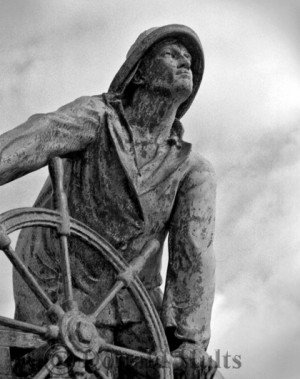 I come from a long line of fishermen spanning three generations and although I am retired, I remain committed to the fishing industry, and will continue to do so, which is the reason I stay involved in politics. Back in the late 1970s I was appointed as chairman of The North Atlantic Task Force by than Governor Mike Dukakis. We brought the Canadians to Court for unfair exports of fresh fish into the USA ,we won the case. Back in the early 1960s before the 200 mile limit, I fished alongside Russian factory ships who raped our fisheries using small mesh nets. In 1977 we got relief when Senators Warren Magnuson and Gerry Studds penned the nations first fisheries management plan and ushered in the 200 mile limit. The Magnuson Act was the worlds first fisheries management plan that used biological targets to manage the fisheries. Read the essay here 18:30
I come from a long line of fishermen spanning three generations and although I am retired, I remain committed to the fishing industry, and will continue to do so, which is the reason I stay involved in politics. Back in the late 1970s I was appointed as chairman of The North Atlantic Task Force by than Governor Mike Dukakis. We brought the Canadians to Court for unfair exports of fresh fish into the USA ,we won the case. Back in the early 1960s before the 200 mile limit, I fished alongside Russian factory ships who raped our fisheries using small mesh nets. In 1977 we got relief when Senators Warren Magnuson and Gerry Studds penned the nations first fisheries management plan and ushered in the 200 mile limit. The Magnuson Act was the worlds first fisheries management plan that used biological targets to manage the fisheries. Read the essay here 18:30
Great Lakes commercial fishermen get hands-on experience in emergency procedures
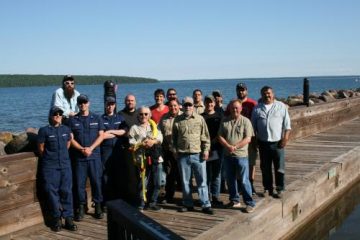 To assist with this effort Michigan Sea Grant coordinated six Drill Conductor Training courses held throughout the Great Lakes region recently to help Great Lakes commercial fishing vessel captains fulfill U.S. Coast Guard regulations related to instruction, drills and safety orientations, and onboard emergency instruction. Commercial fishers are required to practice monthly emergency drills that cover ten contingencies spelled out in the regulation. Persons conducting these drills must have passed a Drill Conductor Training course. The Alaska Marine Safety Education Association (AMSEA) assisted Michigan Sea Grant with these training efforts that were held in Michigan and Wisconsin. Read the rest here 16:54
To assist with this effort Michigan Sea Grant coordinated six Drill Conductor Training courses held throughout the Great Lakes region recently to help Great Lakes commercial fishing vessel captains fulfill U.S. Coast Guard regulations related to instruction, drills and safety orientations, and onboard emergency instruction. Commercial fishers are required to practice monthly emergency drills that cover ten contingencies spelled out in the regulation. Persons conducting these drills must have passed a Drill Conductor Training course. The Alaska Marine Safety Education Association (AMSEA) assisted Michigan Sea Grant with these training efforts that were held in Michigan and Wisconsin. Read the rest here 16:54
Another Fishery, Another Threat – LI commercial bluefish season faces unprecedented mid season closure
 Locally caught bluefish fillets may soon be scarce at Long Island fish stores if actions by the federal government force a closure of the New York commercial fishery in coming days. In a letter to the regional director of the National Oceanic and Atmospheric Administration Tuesday, the commissioner of the state Department of Environmental Conservation said newly implemented restrictions on commercial bluefish harvesting would have “devastating” impacts. “I urge you to reconsider the management strategy for Atlantic bluefish,” BDEC Commissioner Basil Seggos wrote to NOAA regional director . “The elimination in mid season of quota from the commercial fishery in 2016 is shocking and would deal a devastating blow to our commercial fisheries.” Read the rest here 16:10
Locally caught bluefish fillets may soon be scarce at Long Island fish stores if actions by the federal government force a closure of the New York commercial fishery in coming days. In a letter to the regional director of the National Oceanic and Atmospheric Administration Tuesday, the commissioner of the state Department of Environmental Conservation said newly implemented restrictions on commercial bluefish harvesting would have “devastating” impacts. “I urge you to reconsider the management strategy for Atlantic bluefish,” BDEC Commissioner Basil Seggos wrote to NOAA regional director . “The elimination in mid season of quota from the commercial fishery in 2016 is shocking and would deal a devastating blow to our commercial fisheries.” Read the rest here 16:10
‘Wicked Tuna’ premier party set for July 23 at Pirate’s Cove Pavilion
 “Wicked Tuna: Outer Banks,” the third season of the National Geographic TV channel series featuring North Carolina fishermen, will have a local premier party on Saturday, July 23 at Pirate’s Cove Pavilion. The event will be a fundraiser for North Carolina Watermen United and the North Carolina Watermen Foundation. The party will feature dinner by Ortega’z Southwestern Grill, a cash bar with beer and wine, and a Q&A with all three participating southern captains, as well as the screening of the 2015 final episode and the 2016 first episode. The captains — Greg Mayer, 2014 and 2015 winner of ; returning three year veteran Britt Shackelford; and two year veteran Charlie Griffin — will be on-hand to talk about the experience, sign autographs and shake hands. Some of their mates will be there as well. The captains will have their boats at the marina, weather permitting. On the heels of its fifth season of the hit series Wicked Tuna, National Geographic Channel once again pits the finest captains in Gloucester, Mass. against the best southern fishermen in the third season of the spinoff series Wicked Tuna: Outer Banks, premiering Monday, July 25 at 9 p.m. Read the rest here 14:09
“Wicked Tuna: Outer Banks,” the third season of the National Geographic TV channel series featuring North Carolina fishermen, will have a local premier party on Saturday, July 23 at Pirate’s Cove Pavilion. The event will be a fundraiser for North Carolina Watermen United and the North Carolina Watermen Foundation. The party will feature dinner by Ortega’z Southwestern Grill, a cash bar with beer and wine, and a Q&A with all three participating southern captains, as well as the screening of the 2015 final episode and the 2016 first episode. The captains — Greg Mayer, 2014 and 2015 winner of ; returning three year veteran Britt Shackelford; and two year veteran Charlie Griffin — will be on-hand to talk about the experience, sign autographs and shake hands. Some of their mates will be there as well. The captains will have their boats at the marina, weather permitting. On the heels of its fifth season of the hit series Wicked Tuna, National Geographic Channel once again pits the finest captains in Gloucester, Mass. against the best southern fishermen in the third season of the spinoff series Wicked Tuna: Outer Banks, premiering Monday, July 25 at 9 p.m. Read the rest here 14:09
Exactly where do Maine lobstermen fish?! The government wants to know
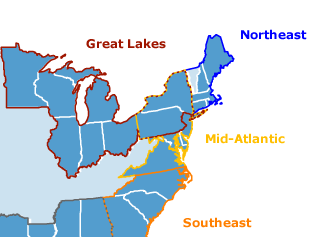 It is the state’s largest fishery, bringing in more than $500 million a year and employing tens of thousands of people up and down the supply chain, but there is no map that shows exactly where Maine’s lobstermen trap their catch. Most of them fish within 3 miles of the coast, and thus do not fill out detailed federal catch reports or have onboard satellite tracking systems that lend themselves to detailed maps of valuable fishing territories. That suits many lobstermen just fine, because they say their territory changes from year to year and they don’t like the notion of the government tracking where they fish. But that attitude makes life difficult for regulatory agencies responsible for permitting non-fishing activities in the Gulf of Maine, such as wind farms or mining operations. The lack of detailed, up-to-date maps of lobster fishing grounds is obvious when reviewing the hundreds of maps collected by the Northeast Regional Planning Body, the federal planning body that is overseeing the nation’s regional ocean planning from the Gulf of Maine to Long Island Sound. The council is building a trove of online data,,, Read the rest here 12:35
It is the state’s largest fishery, bringing in more than $500 million a year and employing tens of thousands of people up and down the supply chain, but there is no map that shows exactly where Maine’s lobstermen trap their catch. Most of them fish within 3 miles of the coast, and thus do not fill out detailed federal catch reports or have onboard satellite tracking systems that lend themselves to detailed maps of valuable fishing territories. That suits many lobstermen just fine, because they say their territory changes from year to year and they don’t like the notion of the government tracking where they fish. But that attitude makes life difficult for regulatory agencies responsible for permitting non-fishing activities in the Gulf of Maine, such as wind farms or mining operations. The lack of detailed, up-to-date maps of lobster fishing grounds is obvious when reviewing the hundreds of maps collected by the Northeast Regional Planning Body, the federal planning body that is overseeing the nation’s regional ocean planning from the Gulf of Maine to Long Island Sound. The council is building a trove of online data,,, Read the rest here 12:35






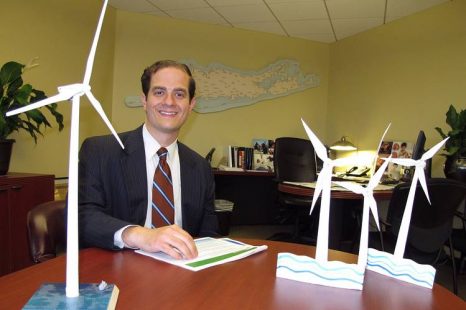 Long Island would get New York state’s first offshore wind farm, a collection of wind turbines off Montauk that could provide energy for 50,000 homes, under an agreement detailed Thursday. The board of trustees of the Long Island Power Authority, a state authority, is expected to vote Wednesday to approve a plan with Deepwater Wind LLC, which would build 15 wind turbines on a open-ocean site it leases from the federal government. The plan has drawn opposition from the commercial fishing industry, worried about disturbances to prime fish-nursery areas. Bonnie Brady, executive director of the Long Island Commercial Fishing Association, said the project would “maim and kill fish” through years of pile driving and laying of cable. She said the bases of the towers would then permanently alter the undersea environment. “These industrial projects should not be built where things live,” she said. “From a commercial fishing standpoint we are being sold out.”
Long Island would get New York state’s first offshore wind farm, a collection of wind turbines off Montauk that could provide energy for 50,000 homes, under an agreement detailed Thursday. The board of trustees of the Long Island Power Authority, a state authority, is expected to vote Wednesday to approve a plan with Deepwater Wind LLC, which would build 15 wind turbines on a open-ocean site it leases from the federal government. The plan has drawn opposition from the commercial fishing industry, worried about disturbances to prime fish-nursery areas. Bonnie Brady, executive director of the Long Island Commercial Fishing Association, said the project would “maim and kill fish” through years of pile driving and laying of cable. She said the bases of the towers would then permanently alter the undersea environment. “These industrial projects should not be built where things live,” she said. “From a commercial fishing standpoint we are being sold out.” 